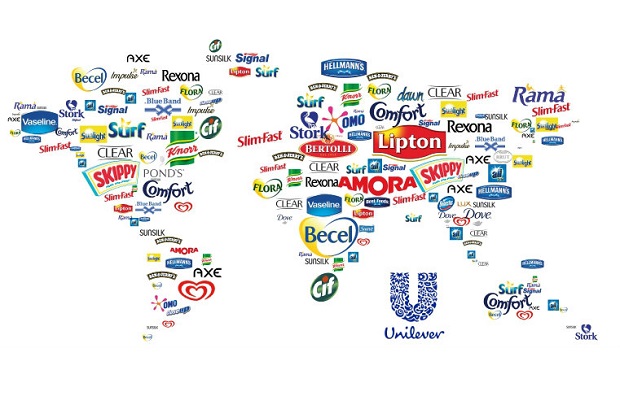Unilever plans to shift more of its marketing budget to digital display advertising, after a successful trial involving five of its brands delivered an average return on investment (ROI) of £1.47 for every £1 spent.

The data was calculated by the Internet Advertising Bureau (IAB), which was one of the partner organisations that took part in Unilever’s ongoing research project.
The findings form part of the first phase of a year-long research project between Aimia, Sainsbury’s, Nielsen, i2c and the IAB. The project involved testing digital display advertising for three Unilever brands – Persil, Magnum and Maille – and two Nestle brands – Nescafe and Haagen Dazs.
The ads were served programmatically on mainstream sites such as the Guardian and Mail Online over a six-week period using customer insight data from i2c to allow the brands to target consumers, via cookies, who had bought products in one of the five categories from Sainsbury’s.
This allowed Unilever to target consumers who had shopped at Sainsbury’s and had bought one of the five brands under review, which included Persil washing powder and Magnum ice cream.
These consumers were then compared with others who were not served targeted ads, while data from Sainsbury’s Nectar loyalty card was used to track both online and offline purchases.
With the results showing ROI of £1.47 for every £1 spent, Unilever and its partners plan to expand the trial to involve up to 20 brands in later phases.
Can you trust the data?
Everyone is aware of the challenge: “I know half my advertising is wasted, I just never know which half”. Marketers have been wrestling with ROI since the start of marketing. What’s different now is that smart research really does unpack the shopper touchpoints, to give you a near perfect answer. This type of research successfully tracks the individual through their cookies, and connects their digital media behaviour to accurate loyalty card data on spend. That means Unilever can be confident in their assertions, and also confident of the consumer’s media exposures – at least the trackable online ones.
Speaking to Marketing Week, Stuart Jeffrey, Unilever’s Shopper Marketing Manager Homecare, said: “We got involved [in the project] because there is an acknowledgement within the business that consumers are shopping online more than ever before and so we wanted to adopt our shopper marketing plan to reflect this shift. Programmatic display seemed a good way to do this”.
“The extra benefit here was that we could see how we were changing purchase intent due to the Nectar card data. That was a big sell. We can now go back to the business to show how the investment is working. We haven’t been able to do that to-date to my knowledge.”
Jeffrey added that the results will provide a benchmark for online display that Unilever hasn’t had before and that they would encourage the company to spend more on e-commerce sites.
“This has proved the theory that [online display] is not just impacting online sales but in-store as well … My plan for this year now versus last year will be to spend more money on e-commerce sites such as Tesco and Sainsbury’s and to drive people to those sites, which is where programmatic comes in.”
Further waves of the project will be conducted to clarify that, with the number of brands involved increasing to 20 to ensure the results are robust.
The IAB says it hopes the project will help “reassure” marketers that online display can have a positive ROI.
The next stage of the campaign will also attempt to work out the full ROI across the sector, not just at Sainsbury’s.
Tim Elkington, the IAB’s COO, told Marketing Week: “From our point of view there were lots of questions about ROI out there, particularly around sales generation. The conversations we have most often with marketers are all about what happens in the offline world if someone is exposed to an online ad and what it can do not just for brand favourability but for actual sales.
“Hopefully this adds a level of reassurance that digital display activity is not just driving brand metrics and online sales, it is offline as well. It seems like a relatively basic question but it is the sort of thing people want assurances about. And this is a really useful proof in the FMCG category.”
Media mix for shopper marketing
Much of marketing builds towards closing the sale, but there can be a vast gulf between building brand love, and adding a product to the shopping cart. That is a challenge that resonates with every consumer goods marketing director who has had to justify spend to their CMO or CEO. Where this study adds to the thinking, is around the discipline of shopper marketing, where all activities are directly linked to closing the sale.
For shopper marketers, the typical tools are sales promotion mechanics, point of sale devices (from offline “shelf wobblers” to premium slots in the search results listings in an online store), CRM (particularly within the retailer’s loyalty programme), and ensuring the product sells itself powerfully off the screen (something Unilever has invested heavily in building an understanding of).
Where this study adds insight, is in moving those trigger messages into the broader online world through programmatic advertising. For many online retailers in travel and finance, retargeting those who have abandoned shopping baskets has been part of the media plan since way before programmatic began, and dates back to the early 2000s. What’s different now is that CPG brands that are simply selling within a third party retailer are also discovering that the approach is cost effective.
